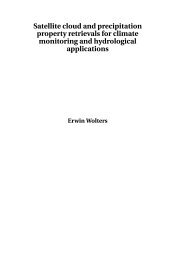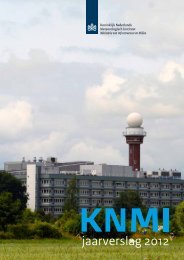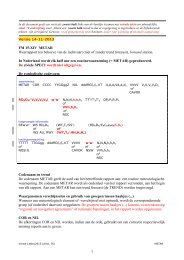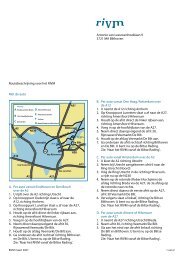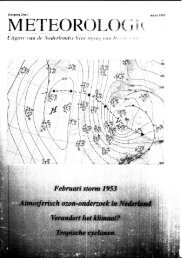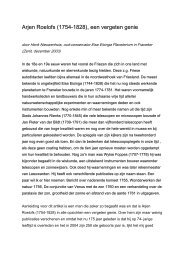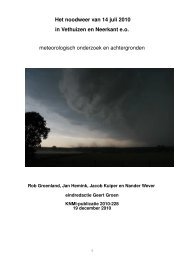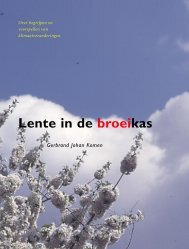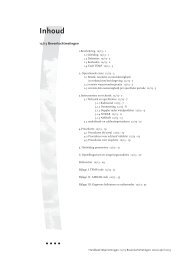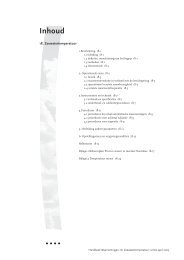Zonnestraling in Nederland - Knmi
Zonnestraling in Nederland - Knmi
Zonnestraling in Nederland - Knmi
You also want an ePaper? Increase the reach of your titles
YUMPU automatically turns print PDFs into web optimized ePapers that Google loves.
to various time scales. Successively the follow<strong>in</strong>g categories are presented:<br />
- the direct irradiance model for an hour or less;<br />
- direct irradiance models for a day or longer, accord<strong>in</strong>g to the algorithms developed by<br />
Revfeim and Page;<br />
- diffuse irradiance models for an hour or less, with the isotropic model and the algorithms<br />
accord<strong>in</strong>g to Hay, Gueymard and Perez as examples;<br />
- sky diffuse irradiance algorithms applicable to time <strong>in</strong>tegrals of a day or longer.<br />
Accord<strong>in</strong>g to the results of the IEA study and a separate test by Van den Br<strong>in</strong>k (1987), the<br />
algorithm accord<strong>in</strong>g to Perez is recommended to be used <strong>in</strong> the Netherlands to calculate<br />
diffuse radiation on <strong>in</strong>cl<strong>in</strong>ed surfaces.<br />
Section 5.3 gives the results of two years measurements of global radiation for 11 differently<br />
<strong>in</strong>cl<strong>in</strong>ed surfaces at Cabauw. The data are given <strong>in</strong> Table 5.2 for 24 days distributed<br />
across the year, and are displayed <strong>in</strong> Figure 5.5 for every month.<br />
S<strong>in</strong>ce no measurements of the spectral distribution of global radiation have been made <strong>in</strong><br />
the Netherlands, an algorithm developed by Slob (1985) has been used to adapt spectral data<br />
collected <strong>in</strong> Ukkel (Belgium) to Netherlands' circumstances. The results are given <strong>in</strong> Table<br />
5.5 for eight spectral bands bet ween 300 and 1000 nm.<br />
Chapter 5 concludes with section 5.5 on photometry, the lum<strong>in</strong>ous efficiency of the human<br />
eye and the conversion of radiation quantities <strong>in</strong> photometric quantities.<br />
Various appendices have been comb<strong>in</strong>ed <strong>in</strong> chapter 6. The first appendix, section 6.1, treats<br />
the different coord<strong>in</strong>ate systems for the position of the Sun <strong>in</strong> the sky, and gives conversion<br />
formulas as well as equations for the calculation of the Sun's decl<strong>in</strong>ation, elevation and<br />
azimuth.<br />
Local mean, national and Standard times are <strong>in</strong>troduced <strong>in</strong> appendix 6.2, with an emphasis<br />
on the history <strong>in</strong> the Netherlands. Also expressions for the equation of time and the length of<br />
the day are given.<br />
The third appendix, section 6.3, is devoted to radiometric and photometric units and their<br />
def<strong>in</strong>itions, and to the various radiometric scales that are or have been <strong>in</strong> use.<br />
With a list of symbols as the fourth appendix (section 6.4) chapter 6 is completed.<br />
153



